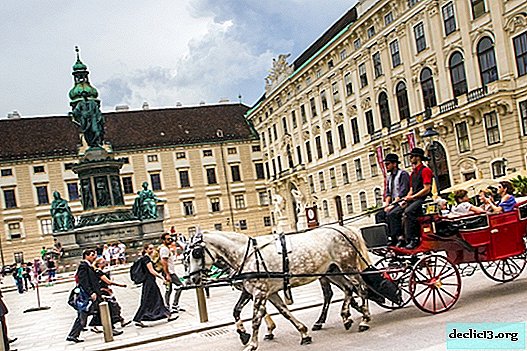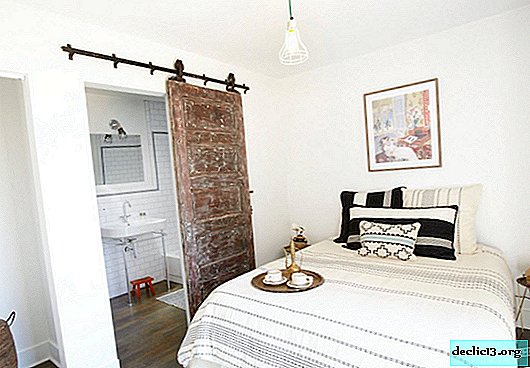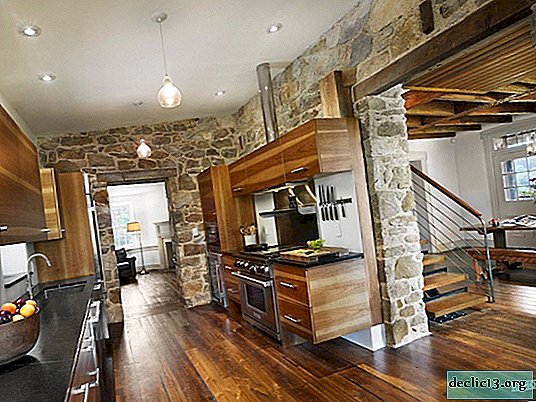Methods of reproduction of the roomy beauty of peperomia and features of care after rooting

Peperomia is a perennial herb that came to us from the tropical forests of South America. Thanks to simple and affordable methods of propagation, this plant quickly spread and won the sympathy of flower growers. This article will tell you when it is best to propagate peperomia, which pot is best for this, what soil is needed and whether it is possible to make it yourself, how to propagate a plant by cuttings, seeds and dividing a bush, how to root and what to do if rooting does not occur, as well as how to care in the future after rooting.
What season is the best time to propagate?
In most cases, experienced growers recommend breeding peperomia in the spring and summer. In particular, it is recommended to propagate by cuttings in the summer, since at this time high temperatures contribute to their rapid rooting, and leaflets or seeds - at any time in spring or summer.
In winter, peperomia does not have a dormant period, like most other plants. But this does not mean that at this time it is worth doing its reproduction. In the cold season, this culture suffers from a lack of lighting, although it can do with completely artificial light, this is still not enough.
How to prepare a pot?
 This home decorative plant has a very small root system, and when choosing a pot you need to focus not on its aesthetic appearance, but on the size of the root system of peperomia. For propagation by cuttings, you need to choose a deep and not wide capacityand then, when the sprouts take root and grow a little, transplant them into a larger vessel.
This home decorative plant has a very small root system, and when choosing a pot you need to focus not on its aesthetic appearance, but on the size of the root system of peperomia. For propagation by cuttings, you need to choose a deep and not wide capacityand then, when the sprouts take root and grow a little, transplant them into a larger vessel.
In the same way, one must do the same in the case of leaf propagation. The large depth of the tank is due to the presence of mandatory drainage, which occupies about 3-4 cm, as well as the need for a large space for the roots. The material of the vessel for growing peperomia is not so important, since the key components in this process are drainage and holes for draining water at the bottom, but ceramics should be preferred.
How to make ready soil?
This plant prefers an extremely loose and light substrate, which allows moisture and air to pass freely to its roots. Soil can be prepared independently, and for this you need to mix the following components in certain proportions:
- Humus - 1 part.
- Peat - 1 part.
- Sand - 1 part.
- Sheet earth - 2 parts.
It is in the substrate from such a composition that leaves and cuttings can quickly and correctly take root and grow as independent plants.
From purchased soils, it is recommended to take universal ones for all types of plants, or those intended for palm trees or ficuses. The former are already initially quite loose, due to which moisture stagnation in the substrate is guaranteed not to occur, but the universal soil is not so nutritious, so you will have to independently fill it with useful substances through more frequent fertilizers.
And substrates for ficus or palm trees are oversaturated with peat components, i.e. more dense, and for the cultivation of new peperomia, it is necessary to add special disintegrants to them (perlite, agroperlite, vermiculite).
Important! The substrate for this plant must have an acidity of pH 5.8 - 6.How does a plant reproduce?
Seeds
 There are no special conditions for the selection of seed, so absolutely all seeds selected for this method are suitable. To propagate peperomia seeds, you must perform the following steps:
There are no special conditions for the selection of seed, so absolutely all seeds selected for this method are suitable. To propagate peperomia seeds, you must perform the following steps:
- Prepare a suitable pot in advance.
- Pour in it prepared or purchased soil with additives.
- Place the seeds in the substrate, but do not sprinkle the top of the ground.
- Moderate the soil.
- Place the pot of seeds in a dark room with a temperature of 24 - 25 degrees.
- Immediately after the first shoots, transplant them into separate containers of small size.
Cuttings
This method is the simplest, guaranteeing almost one hundred percent rooting of the stem processes of the plant. We'll see, how to propagate a plant, then to plant and root it:
- Carefully cut off the top of the handle, which has at least 1 knot, with scissors or a sharp blade.
- Place the stalk, separated from the mother plant, in a prepared or purchased soil in a suitable size pot.
- Cover the container with a glass lid.
- Provide a temperature of 24 - 25 degrees.
Dividing the bush
 This method is resorted to if the plant has become large. The essence of the method is the division of the root system into several parts.
This method is resorted to if the plant has become large. The essence of the method is the division of the root system into several parts.
- Gently pull the plant out of the pot and clean the roots of excess land.
- Cut the root system with a processed and well-sharpened blade into 2-4 parts (depending on the size of the plant).
- Sprinkle places of slices with crushed activated or charcoal.
- Plant a divided plant in parts in pots filled with drainage and prepared soil.
- Moisten the substrate.
Is it possible to plant in open ground?
Peperomia is a spectacular decorative culture that differs from others in a large variety of species. But this the plant is not intended for outdoor cultivation at alldue to inappropriate environmental conditions. Temperatures and humidity are too low for this plant even in summer. And these parameters are many times easier to provide in the apartment than on the street.
Home care for the first time after rooting
Absolutely all peperomies are very sensitive to excess moisture in the substrate, and their delicate roots very quickly begin to decay. Therefore, watering is especially important for young plants. Also, direct sunlight can quickly burn the delicate leaves of peperomia, so it should be placed on the western windows of the apartment, where diffused light prevails.
BUT replanting a rooted plant is possible only after a yearwhen the container in which it is located becomes cramped for him.
All the details of caring for this flower at home and on the flower bed can be found in a separate article.
What if not rooted?
If rooting does not occur during propagation of peperomia by cuttings, then, most likely, lateral processes without nodes, growth points, were taken for this method. For successful rooting, 2 to 3 pieces are enough, but not more than 5.
In the case of propagation by dividing the bush, damage to the roots due to negligence can occur, so with this method you need to be as careful as possible. You can cut the damaged areas of the root system with a processed sharp blade, sprinkle the slices with charcoal or activated charcoal, and then transplant them into new soil.
The reproduction of peperomia is an easy process, which even a novice in this business can do. Most gardeners recommend propagating the plant using cuttings, because all that is required is minimal knowledge in the field of floriculture, patience and accuracy.
Useful video
We suggest you watch a video about the reproduction and care of peperomia:

















